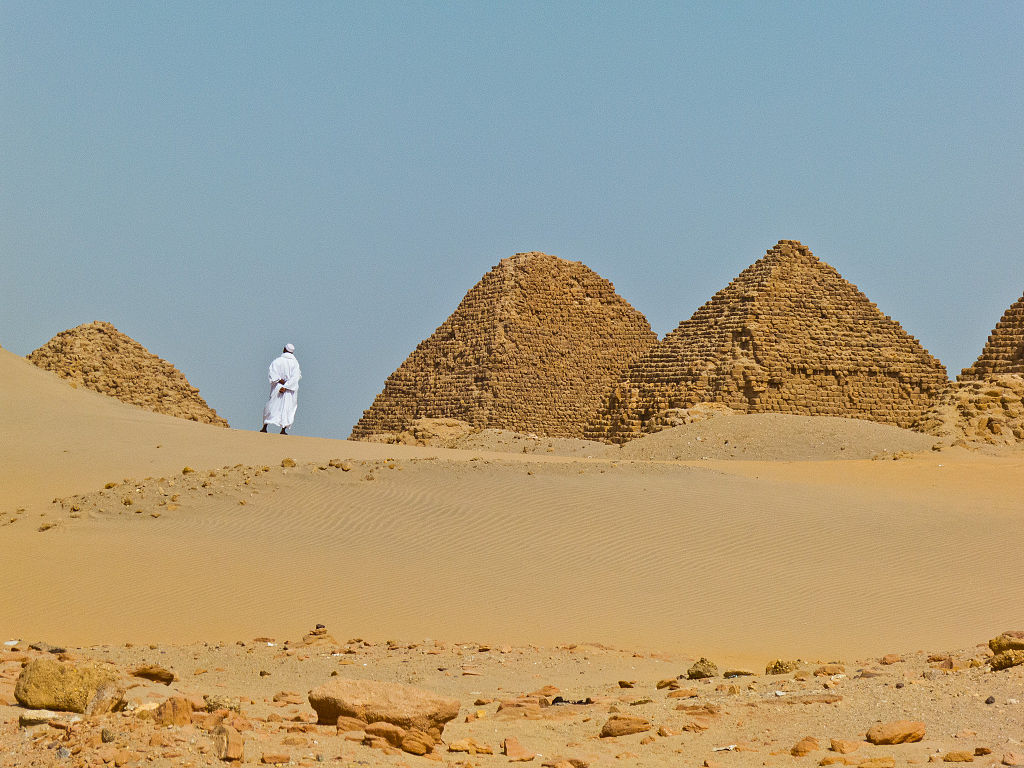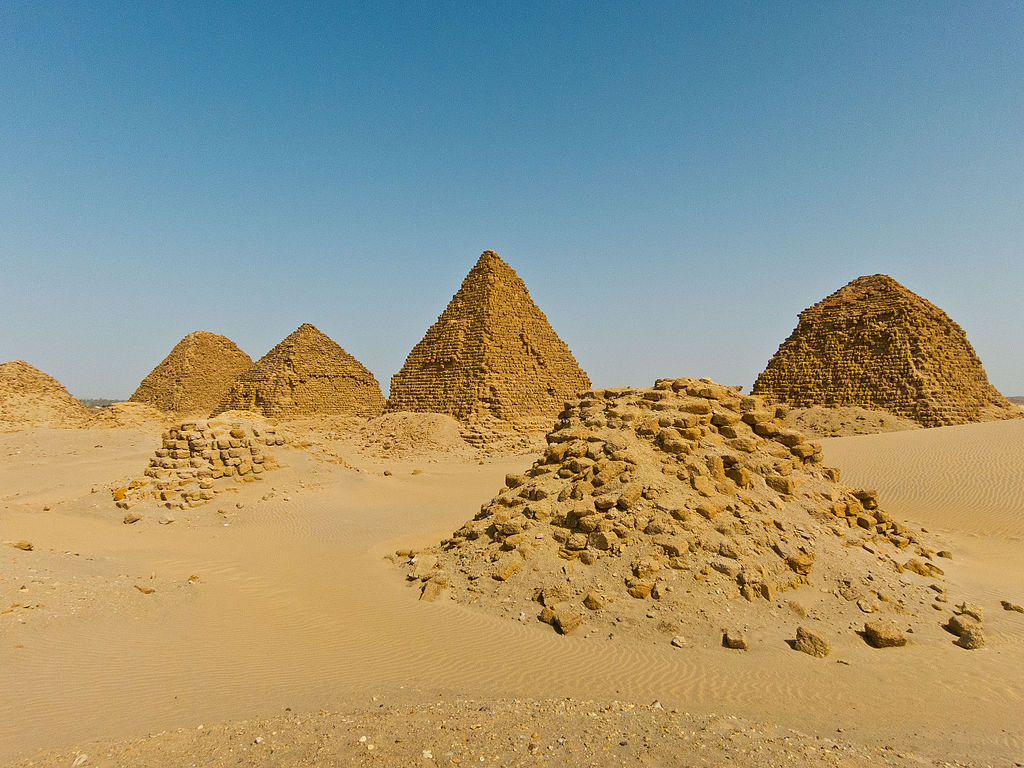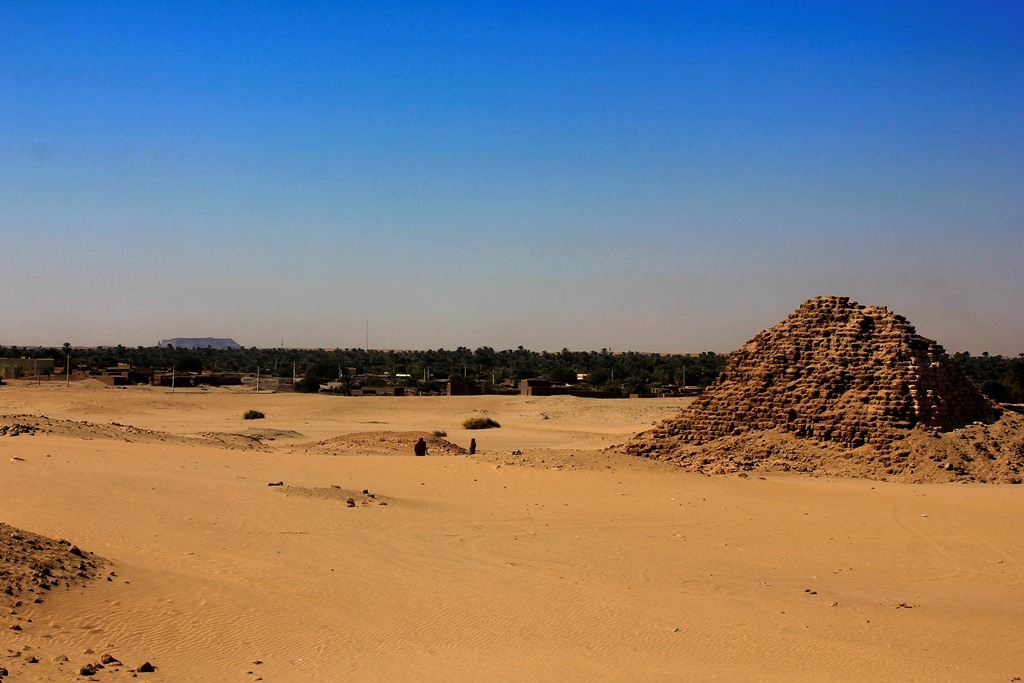Nuri
Key Points
- Nuri is a place in modern Sudan on the west side of the Nile, near the Fourth Cataract Nuri is situated about 15 km north of Sanam, and 10 km from Jebel Barkal.
- More than 20 ancient pyramids belonging to Nubian kings and queens are still standing at Nuri, which served as a royal necropolis for the ancient city of Napata, the first capital of the Nubian Kingdom of Kush. It is probable that, at its apex, 80 or more pyramids stood at Nuri, marking the tombs of royals.
- The earliest known pyramid (Nu. 1) at Nuri belongs to king Taharqa which measures 51.75 meters square by 40 or by 50 metres high. The pyramid of Taharqa was situated so that when observed from Gebel Barkal at sunrise on Egyptian New Year's Day, the beginning of the annual flooding of the Nile, the sun would rise from the horizon directly over its point.
- Tantamani, successor of Taharqa, was buried at el-Kurru, but all following Napatan kings and many of their queens and children until Nastasen (Nu. 15) (about 315 BC) were buried here, some 80 royals.
- The pyramids at Nuri are, in general, smaller than the Egyptian ones and are today often heavily degraded (caused by both humans and nature), but often still contained substantial parts of the funerary equipment of the Kushite rulers who were buried here.
- During the Christian era, a church was erected here. The church was built at least in part from reused pyramid stones, including several stelae originally coming from the pyramid chapels.
Read more: https://en.wikipedia.org/wiki/Nuri
X
External Links
This page uses materials from Wikipedia available in the references. It is released under the Creative Commons Attribution-Share-Alike License 3.0.
References Wikipedia contributors. (2019, March 10). Nuri. In Wikipedia, The Free Encyclopedia. Retrieved 21:08, March 15, 2019, from Link



